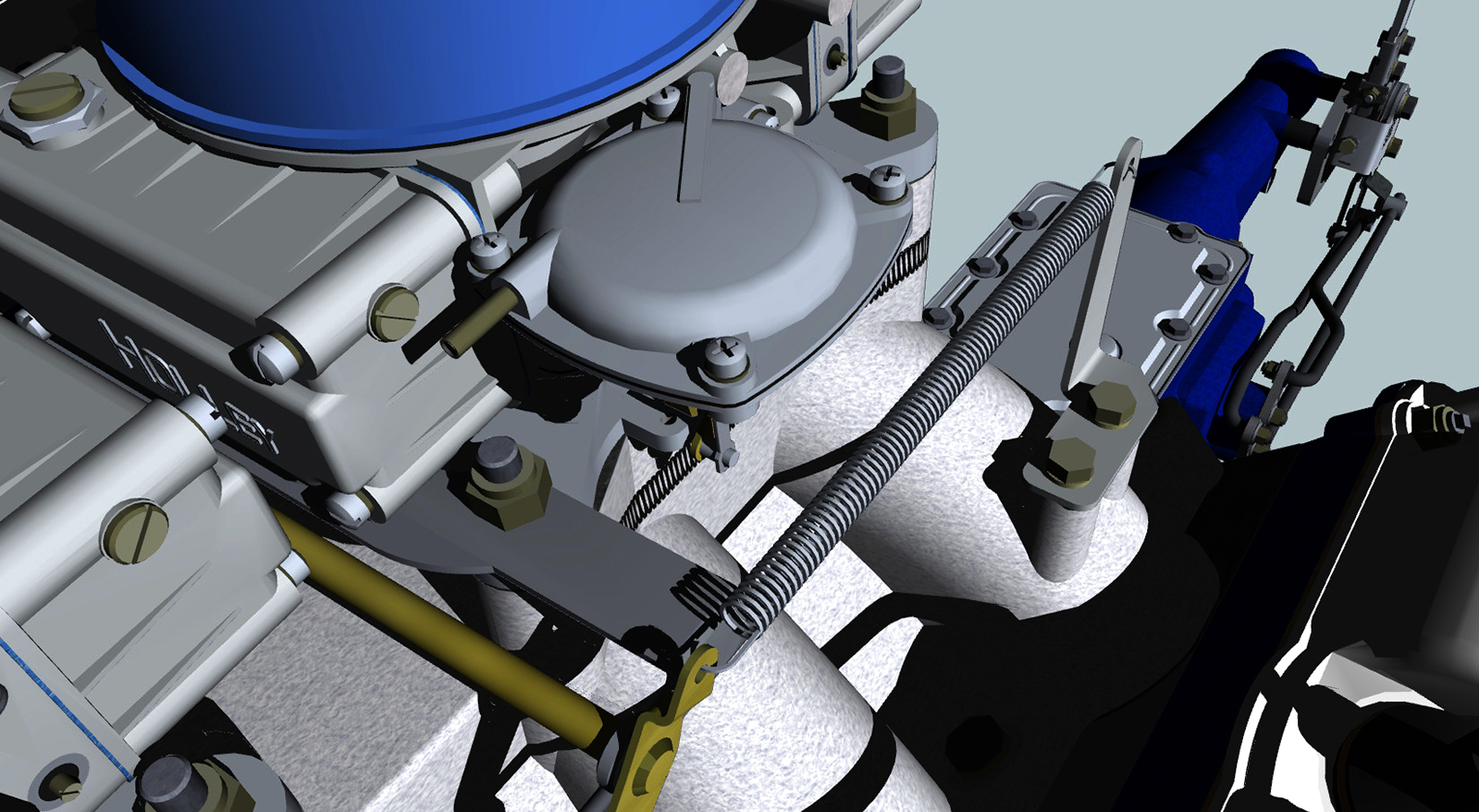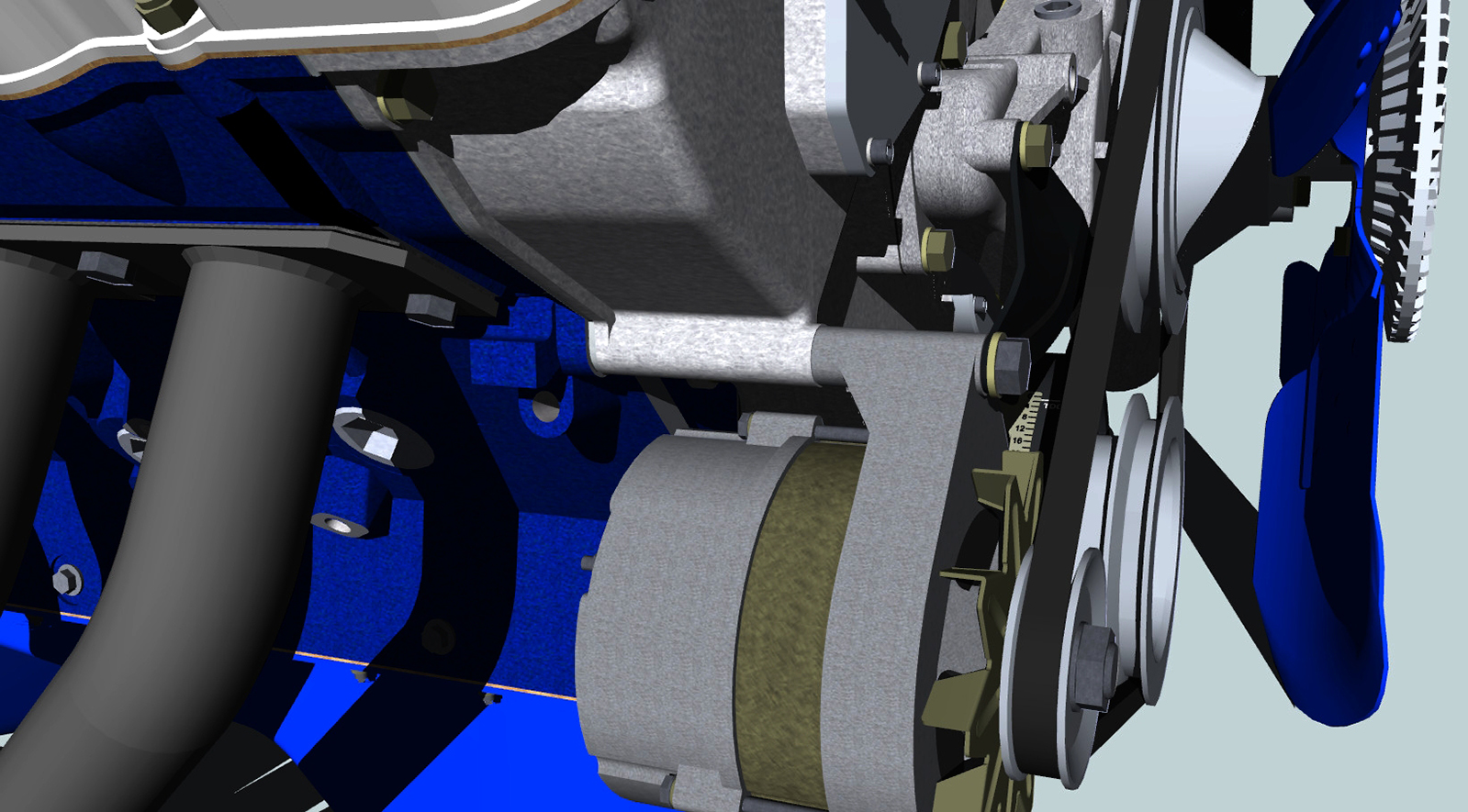Check out this extremely talented modeler
-
Wow! I'd say that clutch assembly is way beyond the call of duty. He knows how to model. Where to put the fine detail and where not to.
-
Wow

If he discovers SketchyPhysics that thing will produce exhaust! -
Thanks for sharing this hellnbak

-
@mitcorb said:
Wow! I'd say that clutch assembly is way beyond the call of duty. He knows how to model. Where to put the fine detail and where not to.
I don't know what to say... everything is insane detailed ... I can't see parts with less details than something that is prepared for production.
-
This is one of those rare models that you just want to keep exploring to see what details you can find next. I'm no engine expert, but I'd bet that each screw, bolt, spring, and fitting is exactly the proper item. I have a great deal of difficulty with making wires or pipes that look like I want them to, let alone have them go precisely from point A to point B. He does it flawlessly. And the textures he's created for all of the various metals really contribute to the overall effect. Makes you want to grab a timing light and go at it (if anybody still remembers what a timing light is
 )
)We really need to get this guy in the next issue of CatchUp





-
Who needs Solidworks anyway??


Great models! Really nice!

-
What? The lazy SOB can't model the rest of the car?!
Just kiddin...don't bite my head off.
I thought I was anal retentive when it comes to detailed modeling, and then along comes stuff like this. Impressive. his training is complete. He is now a sketchup-jedi master.
-
@dereei:
I kind of based my comment on noticing the flanges and body of the fuel pump housing had some telltale facets. But the main portion of the work overall is fantastic. -
This is outstanding -- it's so rare to see modeling like this on the warehouse. I couldn't resist doing a clay render with Maxwell.

Best,
Jason. -
@jason_maranto said:
I couldn't resist doing a clay render with Maxwell.
Best,
Jason.And I couldn't resist tweaking your excellent clay render


-
Now try applying textures to each part!


-
@tfdesign said:
Now try applying textures to each part!


Textures I can work with -- Rendering is completely beyond me. I hope I didn't offend anybody by playing with Jason's render. You've got to be so careful nowadays

-
When I first saw the Headline of this Thread, I thought for sure it would be featuring ME, but alas. . . twas not to be.


This stuff is just amazing.
I hate him.
JK....



-
No offense taken -- I'm easy

-
Wow, simply incredible. With detail like this there must be one in his garage that needs put back together.

-

-
@turbobrad said:
Wow, simply incredible. With detail like this there must be one in his garage that needs put back together.




(indeed great model)
-
Very nice! with all that knowledge of engine detail you'd think the modeler would know that the 427 is a chev engine though. Ford makes the 429 !?

-
whatever. . .The real question. . .can he come buy and fix my Mazda?

-
@xrok1 said:
Very nice! with all that knowledge of engine detail you'd think the modeler would know that the 427 is a chev engine though. Ford makes the 429 !?


Wiki:
The Ford Single Overhead Cam (SOHC) 427 V8 engine, familiarly known as the "Cammer", was released in 1964 to recapture NASCAR dominance from the Chrysler 426 Hemi engine. The Chrysler 426 used extremely large block casting that dwarfed the earlier 392 Hemi. The Ford 427 block was closer dimensionally to the early Hemis than to the elephantine 426 Hemi: the Ford FE bore spacing was 4.63 in (117.6 mm) compared to the Chrysler 392's bore spacing of 4.5625 in (115.9 mm). The Ford FE's deck height of 10.17 in (258.3 mm) was lower than that of the Chrysler 392 at 10.87 in (276.1 mm). For comparison, the 426 Hemi has a deck height of 10.72 in (272.3 mm) and bore spacing of 4.8 in (121.9 mm); both Chrysler Hemis have decks more than 0.5 in (12.7 mm) taller than the FE.The engine was based on the ultra high performance 427 side-oiler block, providing race-proven durability. The block and associated parts were largely unchanged, the main difference being use of an idler shaft instead of the camshaft in the block, which necessitated plugging the remaining camshaft bearing oiling holes.
Advertisement







